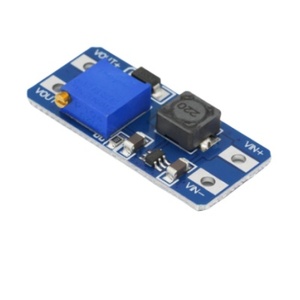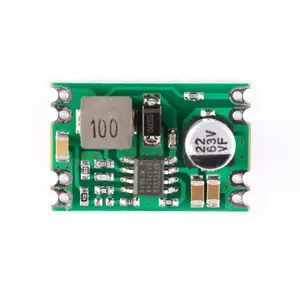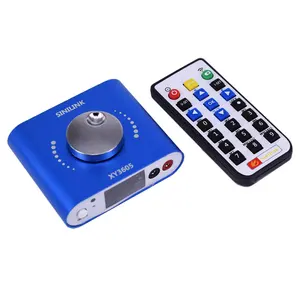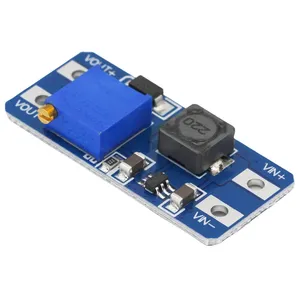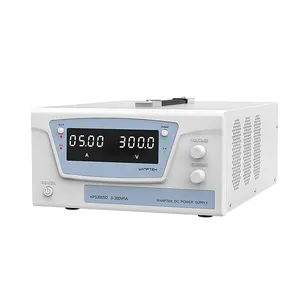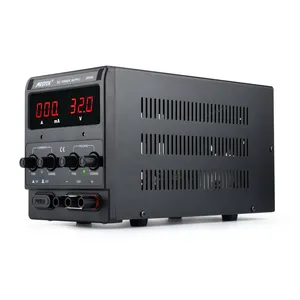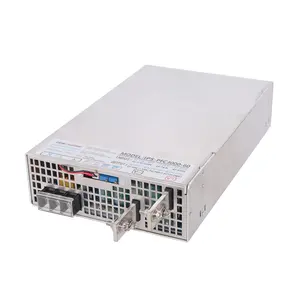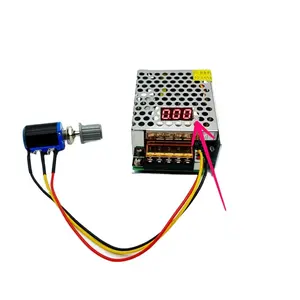Arduino Regulated Power Supply





 1/13
1/13
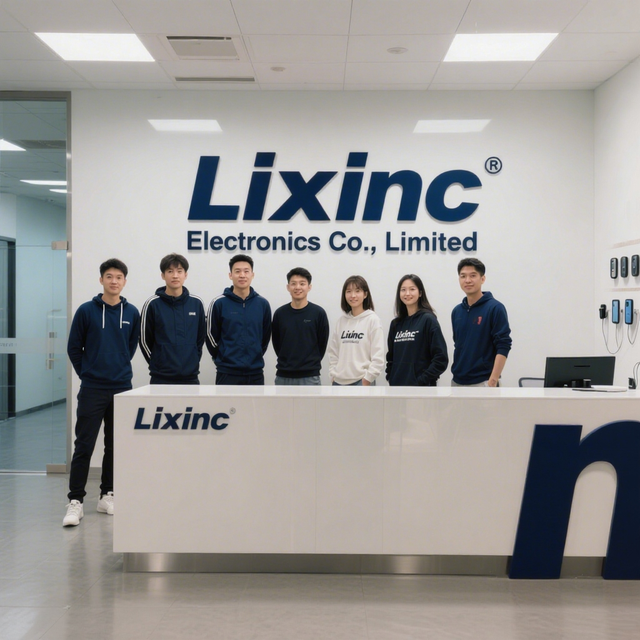



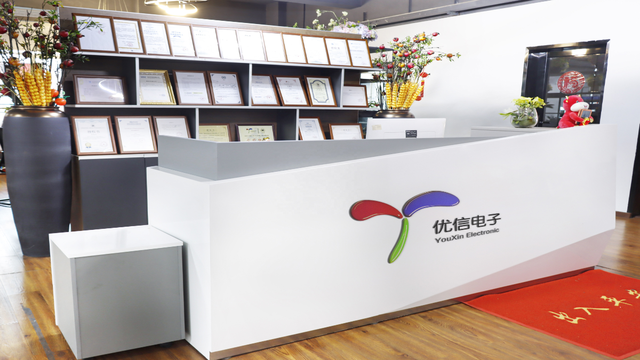





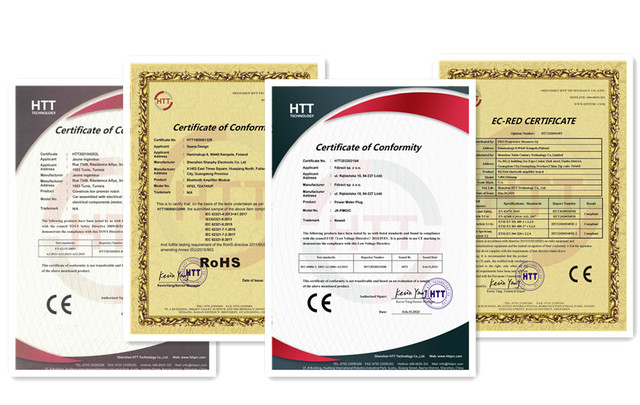



 1/2
1/2












 1/26
1/26





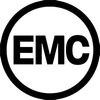


 1/22
1/22





 1/27
1/27






About arduino regulated power supply
Where to Find Arduino Regulated Power Supply Suppliers?
China's electronics manufacturing ecosystem, particularly in the Pearl River Delta region, hosts a dense network of suppliers specializing in regulated power solutions for microcontroller platforms like Arduino. Shenzhen-based enterprises dominate this niche, leveraging integrated supply chains for PCBs, transformers, and semiconductor components. These clusters enable rapid prototyping and scalable production, with many suppliers operating within 50km of key component distributors and logistics hubs.
The region’s mature infrastructure supports both modular DC-DC converter modules and full-scale benchtop power supplies tailored for development environments. Vertical integration allows for cost efficiencies of 20–35% compared to Western manufacturers, while maintaining compatibility with international safety and electromagnetic interference standards. Buyers benefit from short lead times—typically 7–15 days for sample orders and 20–30 days for bulk shipments—due to localized sourcing of magnetics, capacitors, and thermal management materials.
How to Choose Arduino Regulated Power Supply Suppliers?
Effective supplier selection requires evaluation across technical, operational, and transactional dimensions:
Technical Capability Verification
Confirm that suppliers offer products compliant with relevant electrical standards such as RoHS and CE, especially for export to EU or North American markets. For precision applications, validate output stability (±1% tolerance), ripple voltage (<50mV), and load regulation performance. Suppliers should provide test reports or datasheets detailing efficiency curves, thermal derating, and protection features (OCP, OVP).
Production and Customization Capacity
Assess supplier flexibility based on available customization options, including adjustable voltage/current ranges, digital displays, connector types, and enclosure designs. Key indicators include:
- Support for low-voltage DC outputs (3.3V–24V) compatible with Arduino logic levels
- Availability of SMD or through-hole module variants for embedded integration
- In-house PCB design and assembly capabilities for OEM/ODM requests
Cross-reference product listings with response time and reorder rate metrics to gauge service reliability.
Transaction and Quality Assurance
Prioritize suppliers demonstrating consistent on-time delivery (>95%) and fast response cycles (≤3 hours). Review order history and revenue benchmarks as proxies for operational scale. Utilize third-party inspection services for batch validation, focusing on solder joint integrity, insulation resistance, and long-term thermal performance under continuous load.
What Are the Best Arduino Regulated Power Supply Suppliers?
| Company Name | Main Products | Online Revenue | On-Time Delivery | Avg. Response | Reorder Rate | Customization Options | Min. Order Quantity | Price Range (USD) |
|---|---|---|---|---|---|---|---|---|
| Shenzhen Bodunbaili Electronic Co., Ltd. | Benchtop DC power supplies, lab-grade regulators | US $100,000+ | 100% | ≤3h | <15% | Amperage, color, size, logo, packaging, power rating | 1–2 pieces | $30.80–$86.89 |
| Lixinc Electronics Co., Limited | DC-DC modules, step-up converters, LM317 boards | US $70,000+ | 86% | ≤1h | 25% | Limited | 1–10 pieces | $0.30–$9.89 |
| Shenzhen Dongxinda Technology Development Co., Ltd. | LM2596, high-power buck converters, AC-DC modules | US $20,000+ | 100% | ≤1h | <15% | Limited | 1–10 pieces | $0.10–$10.00 |
| Shenzhen Youxin Electronic Technology Co., Ltd. | Boost/buck modules, energy harvesting circuits | US $90,000+ | 100% | ≤3h | <15% | Limited | 2–10 pieces | $0.90–$7.30 |
| Shenzhen Bluetech Technology Co., Ltd. | Adjustable regulator modules, XL6009/LM2596-based units | US $60,000+ | 100% | ≤8h | <15% | Color, size, logo, packaging, graphic labeling | 10 pieces | $0.30–$2.90 |
Performance Analysis
Shenzhen Bodunbaili stands out for higher-end, lab-grade regulated power supplies with extensive customization and strong fulfillment reliability. In contrast, Lixinc Electronics offers ultra-low-cost modules ideal for budget-sensitive integrations but exhibits a lower on-time delivery rate (86%) and higher customer churn (25% reorder rate). Multiple suppliers—including Dongxinda, Youxin, and Bluetech—achieve 100% on-time delivery, indicating robust production control despite varying revenue scales. Bluetech and Bodunbaili provide the broadest customization scope, suitable for branded or application-specific deployments. For high-volume procurement, prioritize suppliers with MOQs aligned to project scale and proven consistency in delivery performance.
FAQs
How to verify Arduino power supply compatibility?
Ensure output voltage matches Arduino requirements (e.g., 5V or 12V nominal), with sufficient current headroom (≥1A for multiple shields). Check for clean DC output with minimal ripple to prevent microcontroller resets. Prefer units with over-current and reverse polarity protection.
What is the typical lead time for samples?
Sample lead times range from 3–7 days for standard modules. Fully assembled benchtop units may require 10–15 days depending on configuration. Express shipping adds 3–5 business days internationally.
Can suppliers provide certification documentation?
Top-tier suppliers can provide RoHS and CE declarations upon request. For safety-critical applications, request test reports for insulation resistance, dielectric strength, and conducted emissions compliance.
Are custom branding and packaging options available?
Yes, select suppliers offer OEM services including silkscreen logos, custom enclosures, labeled output terminals, and retail-ready packaging. Minimum volumes typically start at 100–500 units depending on complexity.
What are common pricing structures for bulk orders?
Volume discounts are standard, with per-unit costs decreasing by 10–30% at 100+ unit tiers. Modular designs (e.g., LM2596 boards) see steeper reductions due to automated assembly. Negotiate FOB terms to optimize shipping costs for containerized loads.










